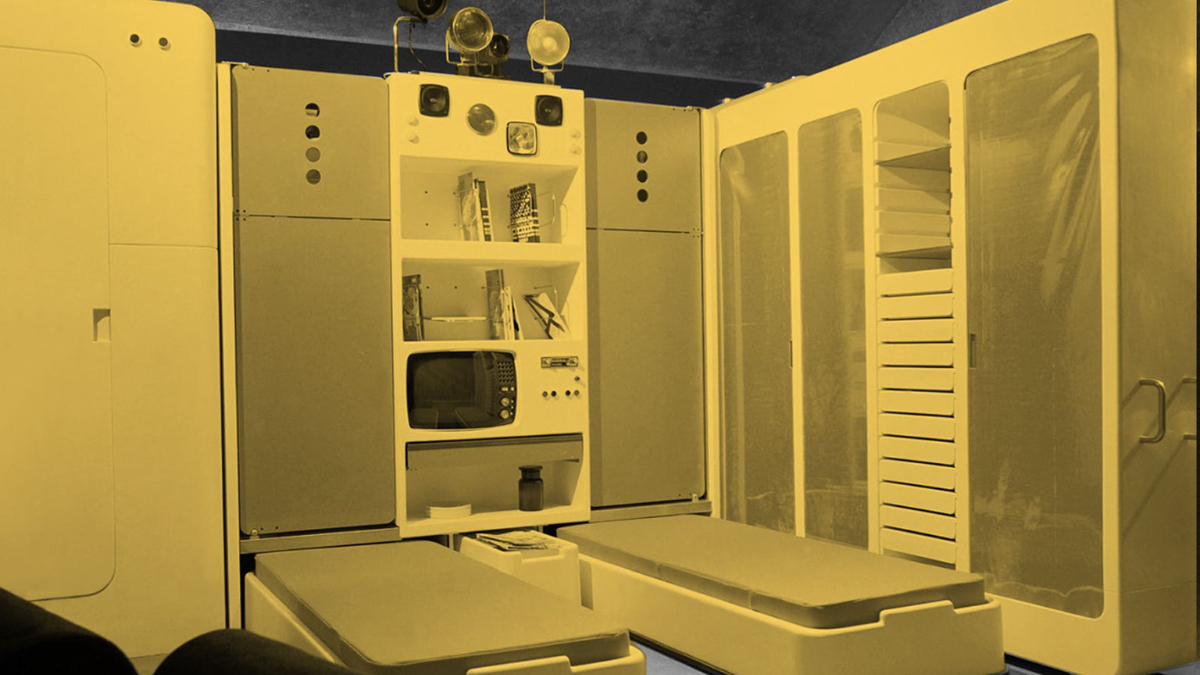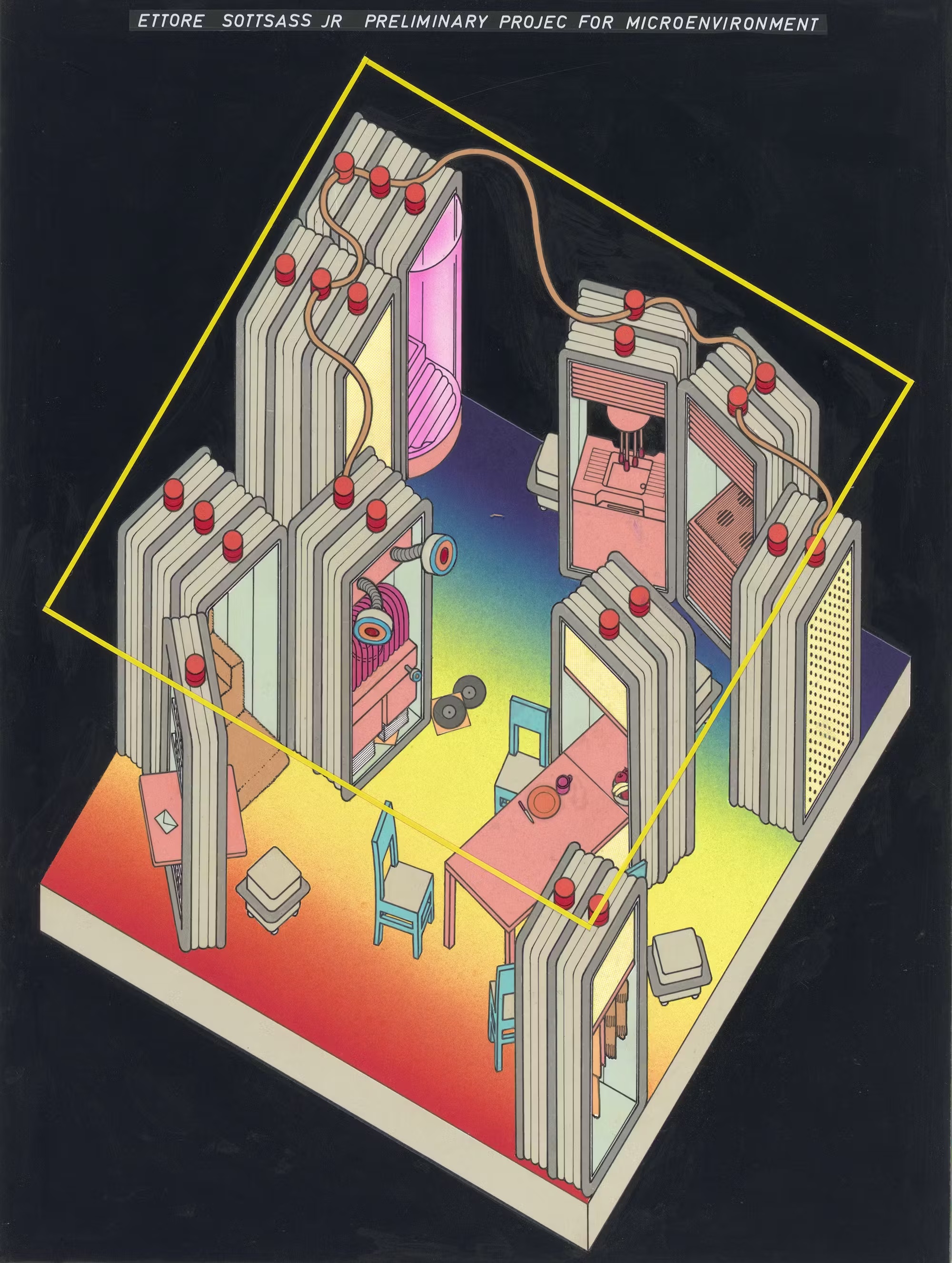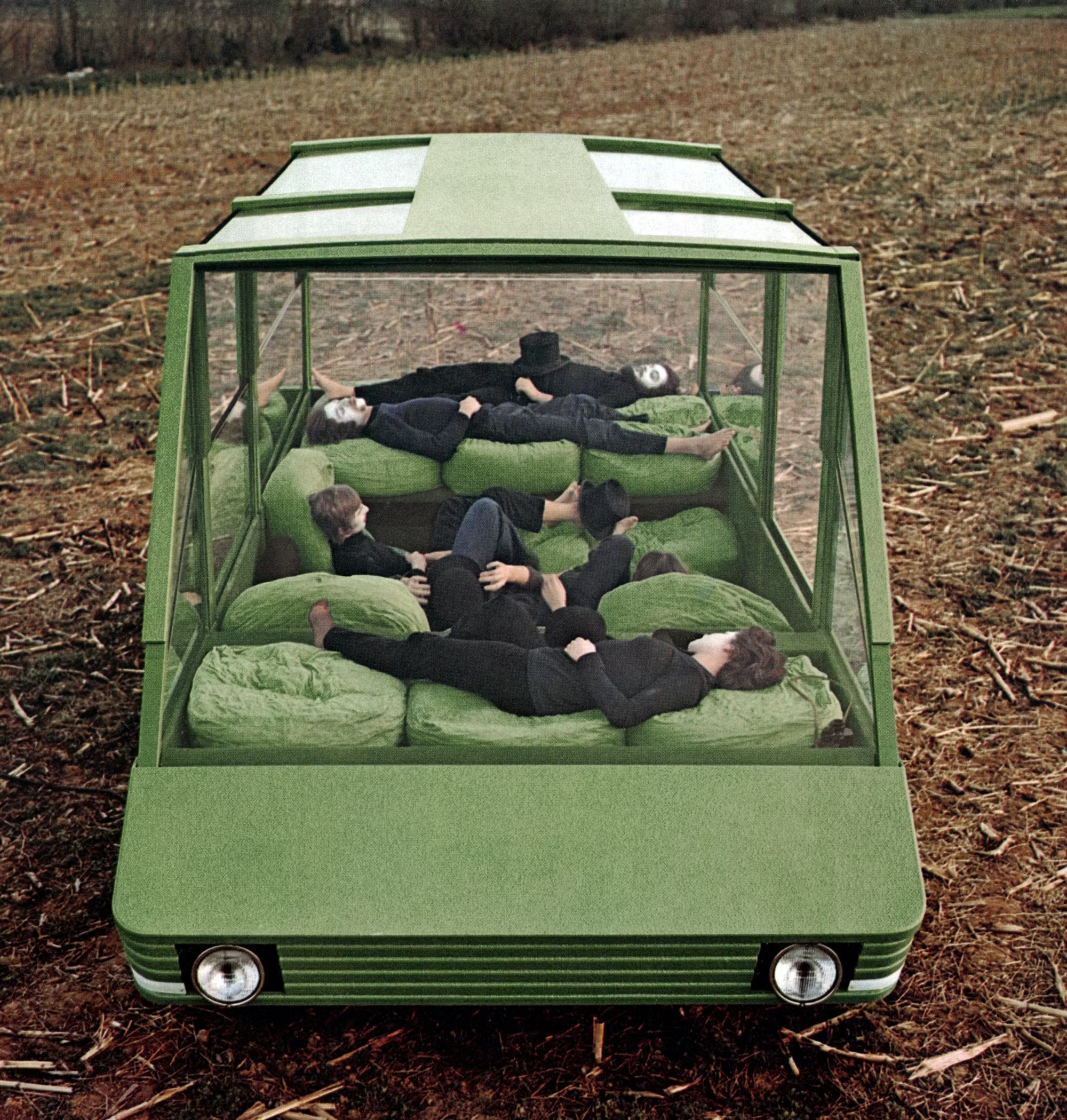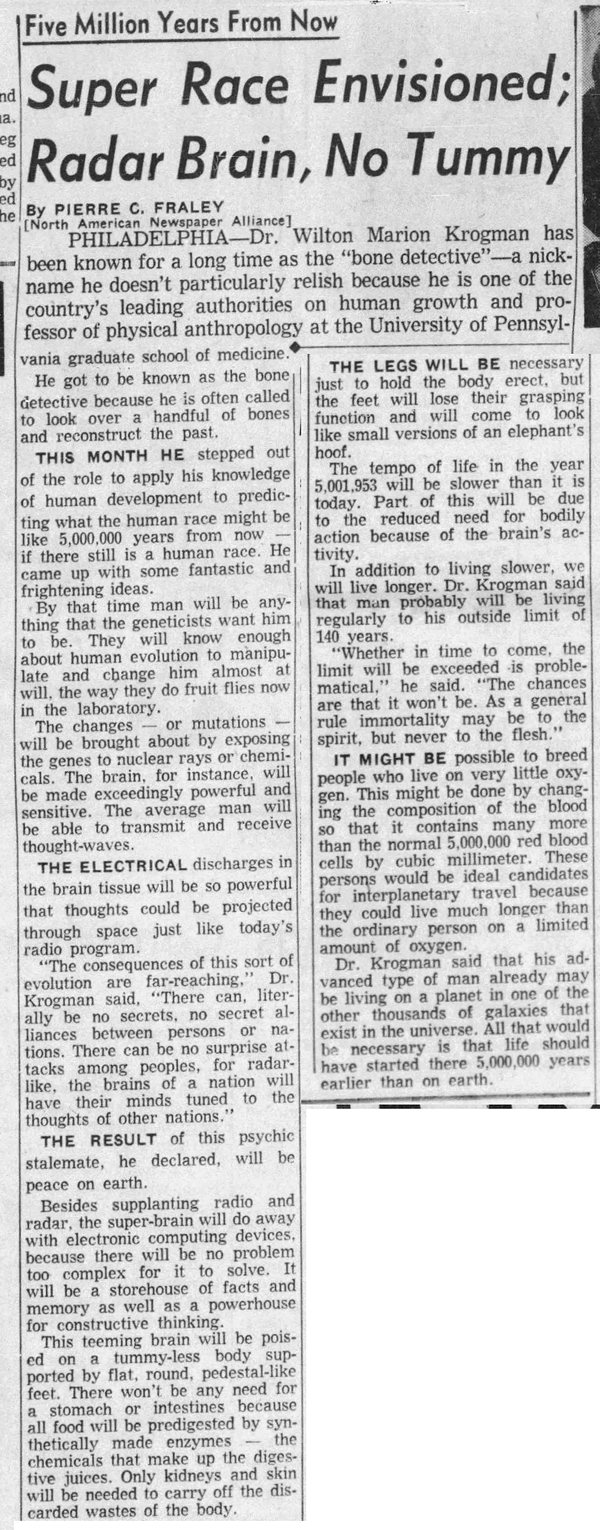Yesterday’s Tomorrows
The New Domestic Landscape
Fifty years ago, a group of designers, showcased at MOMA, tried to predict the way we'd live.As usual with these efforts, there were more misses than hits.
More pix here and here.



Posted By: Paul - Thu Jun 29, 2023 -
Comments (1)
Category: Domestic, Museums, 1970s, Europe, Yesterday’s Tomorrows
Opti-onics, the Technology of the Future
I suppose this came true, if you can say your phone and tablet use something vaguely similar to Opti-onics!Go to source to enlarge the text for reading.

Posted By: Paul - Sun May 07, 2023 -
Comments (3)
Category: Technology, Computers, 1940s, Yesterday’s Tomorrows
Fish Full of Freight
It's the 21st century and we don't have flying cars. Nor do we have atomic-powered submarine freighters towing underwater barges.However, this did remind me of the Russian scheme to use nuclear submarines as oil tankers.

Fortune - Feb 1959
Posted By: Alex - Sat Apr 22, 2023 -
Comments (1)
Category: Boats, Oceans and Maritime Pursuits, Atomic Power and Other Nuclear Matters, Transportation, 1950s, Yesterday’s Tomorrows
The automobile of the future
From the Washington Times - Jan 6, 1918:
Compare this to the Zoox, the self-driving robotaxi that Amazon is developing. Not an exact match, but similar enough that I'm going to call the 1918 prediction a success.
Though note that the 1918 car still had a driver. So the future managed to outdo what the futurists of 1918 imagined.

Posted By: Alex - Sun Apr 02, 2023 -
Comments (5)
Category: Predictions, Yesterday’s Tomorrows, 1910s, Cars
HemisFair 1968
These types of ancient festivals seem all but extinct, making them seem weird to our 2023 eyes. Will they ever happen again?The Wikipedia entry.
Posted By: Paul - Thu Feb 09, 2023 -
Comments (5)
Category: Regionalism, Expositions, World Fairs, Celebrations, 1960s, Nostalgia, Yesterday’s Tomorrows
Welcome to 2023, the year of The End of the Dream
Author Philip Wylie's dystopian final work, The End of the Dream, published in 1972, looked ahead to the world of 2023, which Wylie imagined would be a shell of its former self, having been ravaged in the intervening half-century by a bewildering variety of ecological catastrophes, its population decimated. Most of the novel consisted of describing these catastrophes. They included (as summarized by the NY Times reviewer): "Lethal inversions, volcanic aberrations, exploding rivers (from industrial waste), exploding people (from combustible flatulence), isotopes on the Spuyten Duyvil, sea leeches in the Gulf Stream, plagues of insects, failure of the earth's crust, epidemics of blue haze, green slime, black blight."Here's a snippet from the book that details the combustible flatulence:
The ecological apocalypse that Wylie imagined hasn't arrived quite yet, but who knows what the next fifty years might bring.
You can find The End of the Dream on archive.org.

Posted By: Alex - Sun Jan 01, 2023 -
Comments (4)
Category: Yesterday’s Tomorrows
The house of 2020
Back in 1989, the BBC show 'Tomorrow's World' predicted what kind of technology people would have in their homes in 2020. They weren't that far off.They got music on voice command right. But we don't yet have walls that turn into windows.
Posted By: Alex - Sun Nov 20, 2022 -
Comments (4)
Category: Technology, Yesterday’s Tomorrows
Dome living
I imagine a house like this might be possible to build nowadays, but the monthly electric bill would be a small fortune.

Related post: The Winooski Dome
Posted By: Alex - Sat Oct 29, 2022 -
Comments (3)
Category: Architecture, Utilities and Power Generation, 1950s, Yesterday’s Tomorrows
Homo cerebrointricatus
In 1953, Dr. Wilton Krogman of the University of Pennsylvania used his skills as a physical anthropologist (and his knowledge of human evolution) to predict what humans will look like five million years in the future. He decided that humans will evolve into a species he called Homo cerebrointricatus, meaning super-brained man. Our descendants will have telepathic brains, no stomachs, and "flat, round, pedestal-like feet."Unfortunately, I haven't been able to find any illustrations of Homo cerebrointricatus.
Part of his prediction reminds me of the mentats in Frank Herbert's Dune:

Calgary Herald - Oct 22, 1953
Posted By: Alex - Tue Oct 25, 2022 -
Comments (4)
Category: Anthropology, Science Fiction, 1950s, Yesterday’s Tomorrows
Farmer of the Future

Posted By: Alex - Sat Oct 22, 2022 -
Comments (3)
Category: Farming, 1930s, Yesterday’s Tomorrows

| Who We Are |
|---|
| Alex Boese Alex is the creator and curator of the Museum of Hoaxes. He's also the author of various weird, non-fiction, science-themed books such as Elephants on Acid and Psychedelic Apes. Paul Di Filippo Paul has been paid to put weird ideas into fictional form for over thirty years, in his career as a noted science fiction writer. He has recently begun blogging on many curious topics with three fellow writers at The Inferior 4+1. Contact Us |




